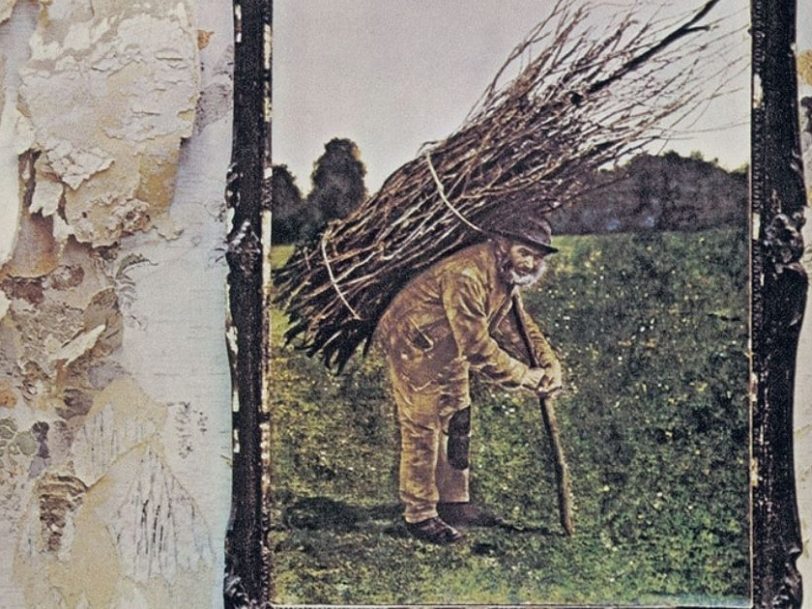In the same way that The Beatles “The White Album” isn’t that record’s official title (it’s technically called The Beatles), the Led Zeppelin album we all refer to as “Led Zeppelin IV” was actually issued without a title at all – or else it was referred to informally as “Four Symbols”, “ZoSo” or “Runes”, due to the runic symbols printed on its inner sleeve.
Listen to “Led Zeppelin IV” here.
On hearing that Led Zeppelin wished to release their fourth album in a wilfully enigmatic sleeve featuring such a paucity of information, those around the band went into a blind panic – one adviser even told guitarist Jimmy Page that such a move was tantamount to “career suicide”. Yet the band stood their ground and their will eventually prevailed. The upshot: “Led Zeppelin IV” received widespread acclaim and has since moved upwards of 37 million copies despite the group’s refusal to compromise.
“We were living in this falling-down mansion, and it was incredible”
This compulsive desire to break new ground typifies everything about “Led Zeppelin IV”, which is still the biggest and most critically lauded title in Led Zeppelin’s mammoth catalogue. Indeed, it wasn’t just the fact the record came housed in a mysterious design that still stands tall among the best Led Zeppelin album covers – the music within was rich in its diversity, and it was captured using some fittingly innovative methodology.
Crucially, while the initial recording sessions took place at Island Studios in London, most of “Led Zeppelin IV” came together when the band moved out of the city to Headley Grange, in the Hampshire countryside, in January 1971. A rambling manorial complex which in previous centuries had been a workhouse for the poor, the Grange offered a live-in situation where the group could write and record whenever the creative juices began to flow – and they’ve freely admitted that the surroundings coloured the way “Led Zeppelin IV” turned out.
“Most of the mood for the fourth album was brought about in settings we had not been used to,” Robert Plant told Classic Rock in 2020. “We were living in this falling-down mansion in the country, and it was incredible.”
“I really wouldn’t change a thing about ‘Led Zeppelin IV’”
The band had hired The Rolling Stones’ mobile recording truck for the sessions, and the lack of distractions in their rural idyll allowed them to focus on work. The Stones’ unofficial sixth member, pianist Ian Stewart, arrived with the truck and a battered old upright piano, and his presence led the group to work up one of “Led Zeppelin IV”’s key tracks in a matter of minutes.




